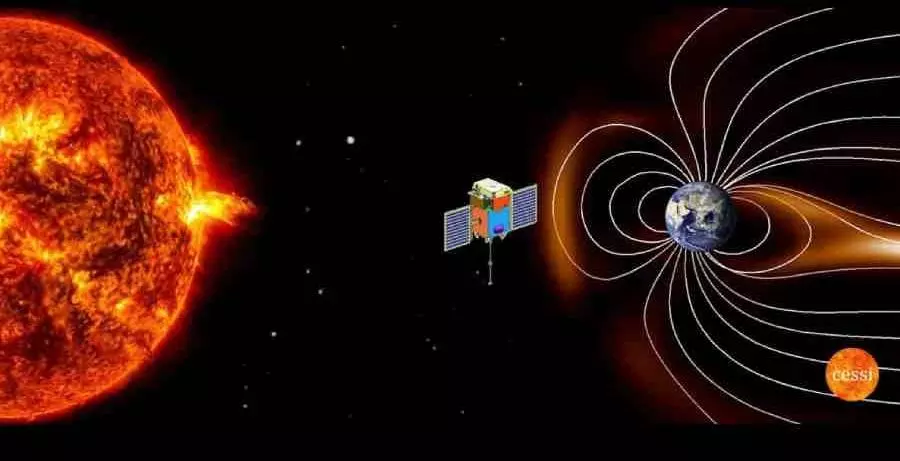
Payload on solar mission Aditya-L1 produces ‘First significant’ results
text_fieldsBengaluru: The Visible Emission Line Coronagraph (VELC) payload aboard the ADITYA-L1, India's first solar mission launched on September 2, 2023, by the Indian Space Research Organisation (ISRO) to observe the Sun at Lagrangian point L1, has produced the "first significant" results, according to scientists at the Indian Institute of Astrophysics (IIA) in Bengaluru.
“Using the unique data obtained with the VELC onboard ADITYA-L1 we were able to precisely estimate the onset time of a coronal mass ejection (CME) that erupted from the Sun on July 16. This is the very first science result from the maiden solar mission of ISRO,” said Senior Professor, IIA and Principal Investigator for the VELC payload, R Ramesh.
One of the main scientific objectives for the VELC is to observe the CMEs as they emerge from the Sun and comprehend its plasma properties. In order to offer information for space weather studies and aid researchers in their understanding of the solar corona, the IIA worked with ISRO to design and build the coronagraph. This January 6th, ADITYA L1 was placed into its intended halo orbit.
“Presently, there are no coronagraphs in operation other than VELC to routinely observe the near-Sun corona and the eruptions there. We were trying to observe a CME during its onset phase and could successfully do it for the event on July 16. This is a study since these types of observations will allow scientists to study the coronal conditions during the onset of a CME, and hence help to model them,” he added.
“With the Sun approaching the maximum phase of the current solar cycle 25, the CMEs are expected to occur frequently everyday. Hence, continuous monitoring of the Sun with VELC is expected to provide valuable scientific data,” said the principal investigator.
About every eleven years, the Sun goes through a natural cycle known as the solar cycle, during which it alternates between periods of low and high magnetic activity. During the solar maximum, there are more sunspots and more solar activity.
“The CMEs are observed in visible continuum light only when they have propagated well away from the Sun’s surface. However, unique spectroscopic observations with the VELC like in our study, let us study CMEs very close to the solar surface itself for the first time”, said Dr V Muthupriyal of IIA.























